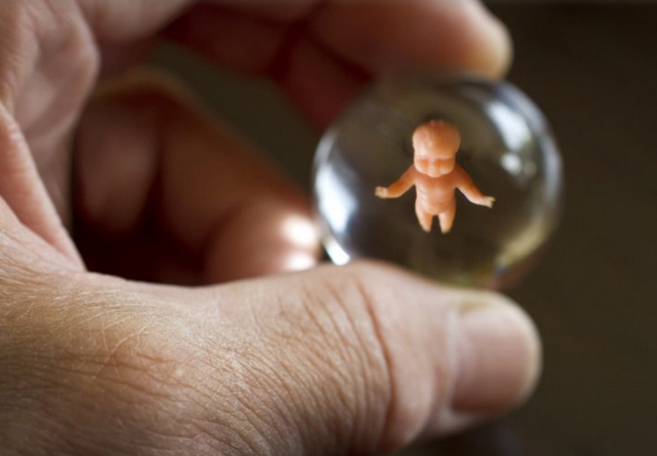When The Matrix explored a fictional world where babies are created outside the human body, it was nothing more than science fiction. Now that imagined scenario is very much a reality as the science of ectogenesis (the gestation of a fetus outside the human body) enters the world stage. As with every new breakthrough in the field of human reproduction, the science of ectogenesis has unleashed a Pandora’s box of social, ethical, legal, philosophical, and political questions. Currently the science is exploring two separate but connected paths, as explained by the journal Reproductive Health and Social Justice:
“There are two commonly cited endeavors in progress. Focusing on finding ways to save premature babies, Japanese professor Dr. Yoshinori Kuwabara of Juntendo University, has successfully gestated goat embryos in a machine that holds amniotic fluid in tanks. On the other end of the process focusing on helping women unable to conceive and gestate babies, is Dr. Helen Hung-Ching Liu, Director of the Reproductive Endocrine Laboratory at the Center for Reproductive Medicine and Infertility at Cornell University. Quietly, in 2003, she and her team succeeded in growing a mouse embryo, almost to full term, by adding engineered endometrium tissue to a bio-engineered, extra-uterine ‘scaffold’. More recently, she grew a human embryo, for ten days in an artificial womb. Her work is limited by legislation that imposes a 14-day limit on research projects of this nature. As complicated as it is, her goal is a functioning external womb.”
The infrastructure of an ectogenesis “womb” is not unlike what science fiction itself has imagined. “Basically, it appears as an amniotic fluid-filled aquarium with a bunch of feeding tubes and monitoring cables attached to a live, developing organism,” explains Zoltan Istvan of VICE News. “Those tubes bring the nutrients, oxygen, etc needed to grow an organism and help it survive; the cables monitor everything going on inside the tank.” As dystopian as it sounds, the science would save lives — all but wiping out infant mortality rates worldwide, as well as saving the lives of countless mothers in the process. But artificial wombs will also be enormously destabilizing on society’s understanding of gender, feminism, the mother-child bond, religion (i.e. virgin mothers), and much, much more.
Paula Mejia of Newsweek writes, “Although it holds the potential to be an efficient and occasionally life-saving procedure, ectogenesis has already sparked debate. Is ‘human’ still applicable if embryos are not technically bred of a human womb? What about ‘mother’? Istvan notes that the most prevalent philosophical issue driving ectogenesis is that it will shift perceptions of women in society. ‘Will the feminine mystique be lost by such an artificial process replacing what’s been long a mainstay of the female domain?’ he asks.”
In her fascinating essay entitled “The Sexual Politics of Ectogenesis in the To-day and To-morrow Series”, Aline Ferreira writes: “While ectogenesis stands at the root of a fantasy which could be equated with masculine womb envy, the dream of becoming a male mother and thus dispensing almost totally with women, for women, on the other hand, extra-uterine pregnancy, combined with cloning techniques, could constitute an enabling vision of autonomy from the male, but also a potentially threatening one, as Ludovici propounds.” You can read the essay in its entirety by visiting Academia.edu.
.


